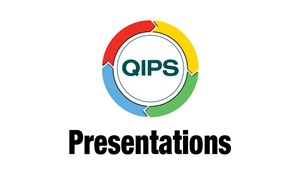
Stroke Care
While emergency care for stroke is often limited to a few hours in the hyper-acute phase of illness, much of the diagnostic value and critical resource decisions for patients with a possible stroke occurs in the ED setting. EDs are the front-line for the recognition, diagnosis, and management of stroke and TIA. Most people with early stroke symptoms will first be cared for in a community hospital with limited stroke capabilities. Furthermore, most hospital support of emergency clinicians for stroke is limited to existing regulatory requirements. As such, most emergency physician stroke QI initiatives are considered burdensome and fail to address the central concerns of front-line clinicians including how to:
- Improve the diagnosis of occult stroke syndromes,
- Reduce the burden or harm associated with initial stroke protocols,
- Best manage limited MRI and hospital resources for hospitalizations,
- Best translate a rapidly evolving evidence base into practice.
Few tools exist to support local emergency physician-led efforts. Built upon a continuously improving learning model, ACEP’s Emergency Quality Network (E-QUAL) seeks to not only identify, curate, and disseminate these practical, evidence-based solutions today, but also accumulate evidence to support an emergency care system that can evolve as newer evidence becomes available to combat stroke nationally.
E-QUAL Model for Improving Emergency Stroke Care
The E-QUAL Stroke Collaborative makes it easier for emergency physicians to engage with other complementary stroke quality improvement initiatives that are neither tailored not targeted towards emergency physicians, including the AHA Get-with-the-Guidelines program and CMS and TJC stroke initiatives. In addition, participating EDs have free access to continuing medical education (CME) credit, maintenance of certification (MOC) credit, and most importantly, Improvement Activity credits for the CMS MIPS payment program for physicians.
Purpose
The E-QUAL Stroke Collaborative leverage the existing resources and processes of E-QUAL to advance the science of emergency stroke care. The E-QUAL Stroke Collaborative has three specific research aims:
- To assess the current state of emergency department and emergency physician stroke care
- To test the validity and feasibility of emergency physician focused quality measures of stroke care
- To evaluate the effectiveness of this novel, low-cost, virtually based learning collaborative on stroke care
Scope
The E-QUAL Stroke Collaborative offers 2-4 clinical targets of salience and importance to front-line emergency clinicians. All content is investigator initiated and developed to ensure scientific independence as well as user-centered design. The preliminary topics under consideration are vetted with the EQUAL Stroke Collaborative Steering Workgroup before final targets are selected for study:
- Diagnostic excellence in stroke: participating EDs will implement best practices and QI methods to improve diagnostic accuracy of stroke. This will include improving diagnosis of occult or posterior circulation stroke, as well as the use of diagnostic modalities for stroke.
- Care coordination and notification: EDs will optimize partnerships and pathways for stroke care initiation with local EMS partners.
- Resource stewardship: participating EDs will implement best practices and QI methods to improve the evidence-based use of resource intensive technologies (MRI, etc) and processes (hospitalization, observation, etc.) for stroke (particularly TIA).
- Hemorrhage care: participating EDs will implement QI initiatives to improve evidence-based care for patients with acute hemorrhagic strokes



